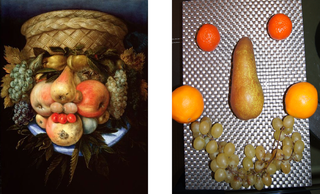This article is more than five years old.
Neuroscience—and science in general—is constantly evolving, so older articles may contain information or theories that have been reevaluated since their original publication date.
People with autism are at high risk of death from injury, China starts a clinical trial involving human embryonic stem cells, and individuals with autism have trouble seeing faces in food.
 Women are generally better than men at detecting the faces in the food designs, but whether this is true among people with autism is not known: The autism group in the new study included only one girl. In another paper, published last year in Frontiers in Psychology, the researchers found that people with Williams syndrome also have difficulty seeing the faces in food images.
Women are generally better than men at detecting the faces in the food designs, but whether this is true among people with autism is not known: The autism group in the new study included only one girl. In another paper, published last year in Frontiers in Psychology, the researchers found that people with Williams syndrome also have difficulty seeing the faces in food images.



